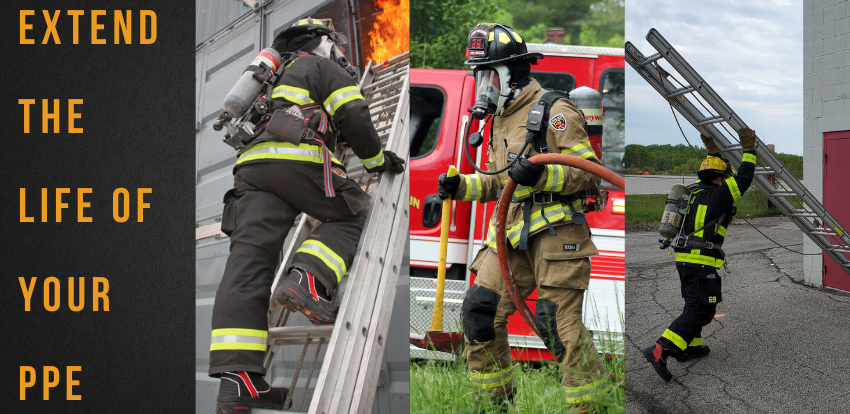The longevity of your turnout gear and the effectiveness against carcinogens relies heavily on one factor: proper maintenance. Firefighters, like yourself, handle dangerous materials on a regular basis and your turnout gear can pick up a number of highly toxic contaminants. Keeping up with maintenance on your turnout gear can help you in three ways:
- Reduce your risk of being exposed (or exposing someone else) to carcinogens
- Save your department money
- Extend the usable life of your garments
The “salty” image is no longer recognized as a badge of honor, it’s a serious health risk. Accumulated soot or substances on turnout gear can have some negative effects on your gear’s ability to keep you protected such as:
- Reducing its ability to reflect water
- Fabrics can be more susceptible to tears or punctures
- Decrease the ability to reflect radiant heat
- Reflective trim can become less visible
- Oils, grease, and hydrocarbon deposits (AKA what we refer to as “the yuck”) from smoke can cause PPE to ignite
- PPE contaminated with “the yuck” are more likely to conduct electricity
By now, you should be convinced of the importance in extending the life of your turnout gear. Follow these maintenance tips to help you do so:
REGULARLY CHECK FOR DAMAGES
Before and after wearing your gear, check for wear and tear! If you see something say something, as soon as possible. You want to keep up on minor repairs before they become irreparable. We recommend that you send your turnout gear to a UL Verified Independent Service Provider (ISP) of PPE. An ISP is a company that specializes in cleaning, inspecting, and repairing firefighting PPE. It’s important to regularly send your gear to an ISP, as it’s much more cost-effective to repair turnout gear than replace it. Even minor damage such as a lost button, or torn strap is worth fixing.
KEEP TURNOUT GEAR CLEAN
Follow the manufacturer's recommendations, and regularly clean your gear. Don't treat your gear like other clothing. Laundering your turnout gear through Gear Wash guarantees the removal of harmful particulates and residue. The advanced fabric of the gear will be protected and reduce your secondary exposure to toxins and carcinogens.
The cleaning facility at Gear Wash uses Turnout Gear Wash, a laundry detergent formulated for the safe cleaning of turnout fabrics, reflective materials, and hardware used with PPE. After entering a structural fire, you will need to decontaminate and wash your turnout gear immediately. Soaking your materials in the EPA registered laundry sanitizer, Shurgaurd Ultimate, keeps your PPE effective against a wide range of viruses and bacteria. It’s important that helmets, boots, gloves, and hoods are inspected and cleaned to ensure maximum use.
DO NOT EXPOSE TURNOUT GEAR TO LIGHT
Prolonged exposure to UV rays and florescent lighting can damage your turnout gear. Keeping your gear tucked away from harsh lighting will help protect it. Try storing your turnout gear in a locker or on a rack, away from direct light. Also, allocating proper storage for your PPE makes inspections easier. This can even reduce the possibility of lost gear by making sure it's returned to the correct spot each day.
WHEN TO REPLACE YOUR TURNOUT GEAR
Eventually, your turnout gear will need to be replaced. Once the protective properties of the turnout gear have diminished, it is no longer safe to use. Having a strong layer of protection is necessary for the job of a firefighter. Implementing a rotation of when to buy new turnout gear will allow everyone to have a primary and secondary set. It's important to replace your turnout gear:
- NFPA 1971 recommends turnout gear is retired after 10 years
- When cleaning no longer restores it after being soiled
- When it is beyond regular repair
- When the workplace requirements have changed and the gear is no longer of use
There are many ways to keep your turnout gear safe from exposure. Learn more about the best recommendations for maintaining your turnout gear for longer use.






Leave a Reply